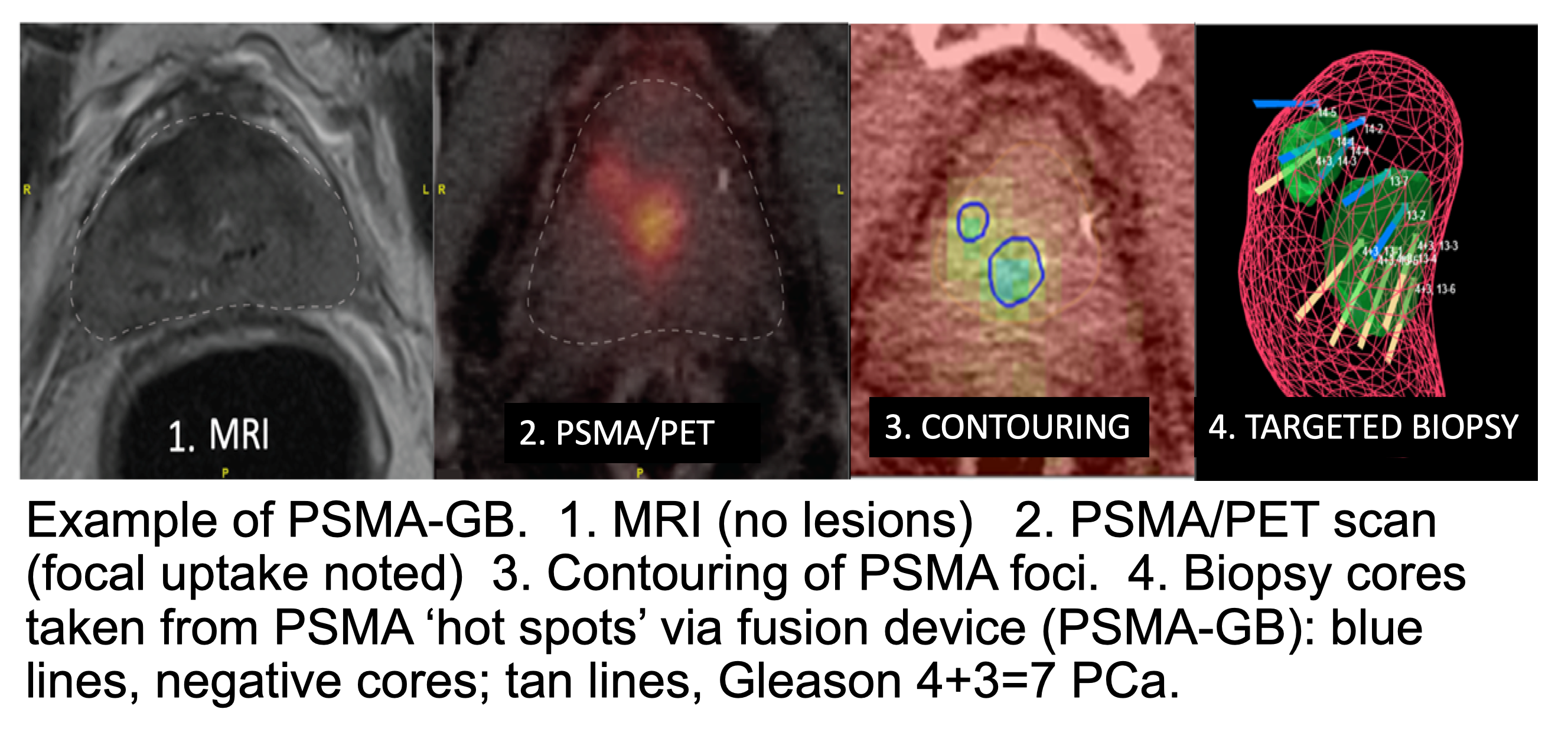Back
Poster, Podium & Video Sessions
Moderated Poster
MP09: Prostate Cancer: Detection & Screening I
MP09-20: Prostate biopsy targeted to Prostate Specific Membrane Antigen (PSMA) foci
Friday, May 13, 2022
10:30 AM – 11:45 AM
Location: Room 222
David Kuppermann*, Jeremie Calais, Los Angeles, CA, Wayne Brisbane, Gainesville, FL, Elizabeth Tran, Lorna Herbert, Matthias Benz, Johannes Czernin, Leonard Marks, Los Angeles, CA

David Kuppermann, MD
UCLA
Poster Presenter(s)
Introduction: PSMA PET imaging is the most accurate imaging method known for detection of metastatic PCa. PSMA PET may also reveal intra-prostatic cancer. 68Ga-PSMA scanning was approved by FDA in December 2020 for pre-op staging of PCa and to detect possible recurrence. MRI-guided biopsy (MRGB) is the preferred method for diagnosis of prostate cancer (PCa), but PCa may be MRI-invisible (˜15-20%). Herein we study intra-prostatic PSMA focal uptake as a target for biopsy detection of PCa using PET/CT-US fusion (PSMA-guided biopsy, PSMA-GB).
Methods: In a prospective trial, 13 men underwent PSMA PET/CT imaging prior to fusion biopsy at UCLA. Subjects are men with negative prior biopsy (10 MRGB), but continued clinical suspicion of PCa and focal uptake of PSMA in the prostate. Method of PSMA-GB is identical to MRGB (PMID 26749141) but employs US fusion with PET/CT instead of MRI, as detailed previously (PMID: 28607878). Method of Ga-PSMA image acquisition via PET/CT scanning has been reported (PMID: 30920593). Contouring of intra-prostatic foci of PSMA positivity was via Profuse software by co-author J.C. Image fusion & trans-rectal targeted biopsy was via Artemis device (LSM). Detection rate of csPCa (>GG2) by PSMA-GB was primary endpoint.
Results: To date, 13 men have completed study. Median age = 71 yrs.; prostate volume = 27.7 cc (IQR 22.1, 38.3); PSA density = 0.25 ng/ml/cc (IQR 0.10, 0.45 PSMA-GB was successfully completed in all 13 with no more difficulty than usual MRI-GB. Overall detection rate was 9/13 (70%): GG2 in 1, GG3 in 6, and GG4 in 2. Max Cancer Core Length was 4 mm median (IQR 3, 9). 4 PSMA foci were anterior; all 4 contained csPCa. Median SUVmax (standardized uptake value) was 6 in PSMA lesions returning
Conclusions: Prostate biopsy, which targets PSMA ‘hot spots’ via PET/CT-US fusion, may lead to detection of clinically significant cancers missed by MRI-guided biopsy.
Source of Funding: None

Methods: In a prospective trial, 13 men underwent PSMA PET/CT imaging prior to fusion biopsy at UCLA. Subjects are men with negative prior biopsy (10 MRGB), but continued clinical suspicion of PCa and focal uptake of PSMA in the prostate. Method of PSMA-GB is identical to MRGB (PMID 26749141) but employs US fusion with PET/CT instead of MRI, as detailed previously (PMID: 28607878). Method of Ga-PSMA image acquisition via PET/CT scanning has been reported (PMID: 30920593). Contouring of intra-prostatic foci of PSMA positivity was via Profuse software by co-author J.C. Image fusion & trans-rectal targeted biopsy was via Artemis device (LSM). Detection rate of csPCa (>GG2) by PSMA-GB was primary endpoint.
Results: To date, 13 men have completed study. Median age = 71 yrs.; prostate volume = 27.7 cc (IQR 22.1, 38.3); PSA density = 0.25 ng/ml/cc (IQR 0.10, 0.45 PSMA-GB was successfully completed in all 13 with no more difficulty than usual MRI-GB. Overall detection rate was 9/13 (70%): GG2 in 1, GG3 in 6, and GG4 in 2. Max Cancer Core Length was 4 mm median (IQR 3, 9). 4 PSMA foci were anterior; all 4 contained csPCa. Median SUVmax (standardized uptake value) was 6 in PSMA lesions returning
Conclusions: Prostate biopsy, which targets PSMA ‘hot spots’ via PET/CT-US fusion, may lead to detection of clinically significant cancers missed by MRI-guided biopsy.
Source of Funding: None


.jpg)
.jpg)